The short video craze is reaching new heights in mainland China. But what’s happening outside? As you may know, Tik Tok is the king of short video Apps oversea.
What is Tik Tok?
If you live outside China, you can hardly have avoided seeing advertising for Tik Tok, the latest short video App to boom in the Western markets. If you live in China, then you will easily recognize Tik Tok’s logo and interface as similar to Douyin (抖音)
There’s a simple reason for that: Tik Tok is none other than the internationalized version of Douyin, launched by the new digital content powerhouse ByteDance (ByteDance is the world’s most highly-valued tech start-up at $75 billion USD, which also operates, among many others, the news App Toutiao).
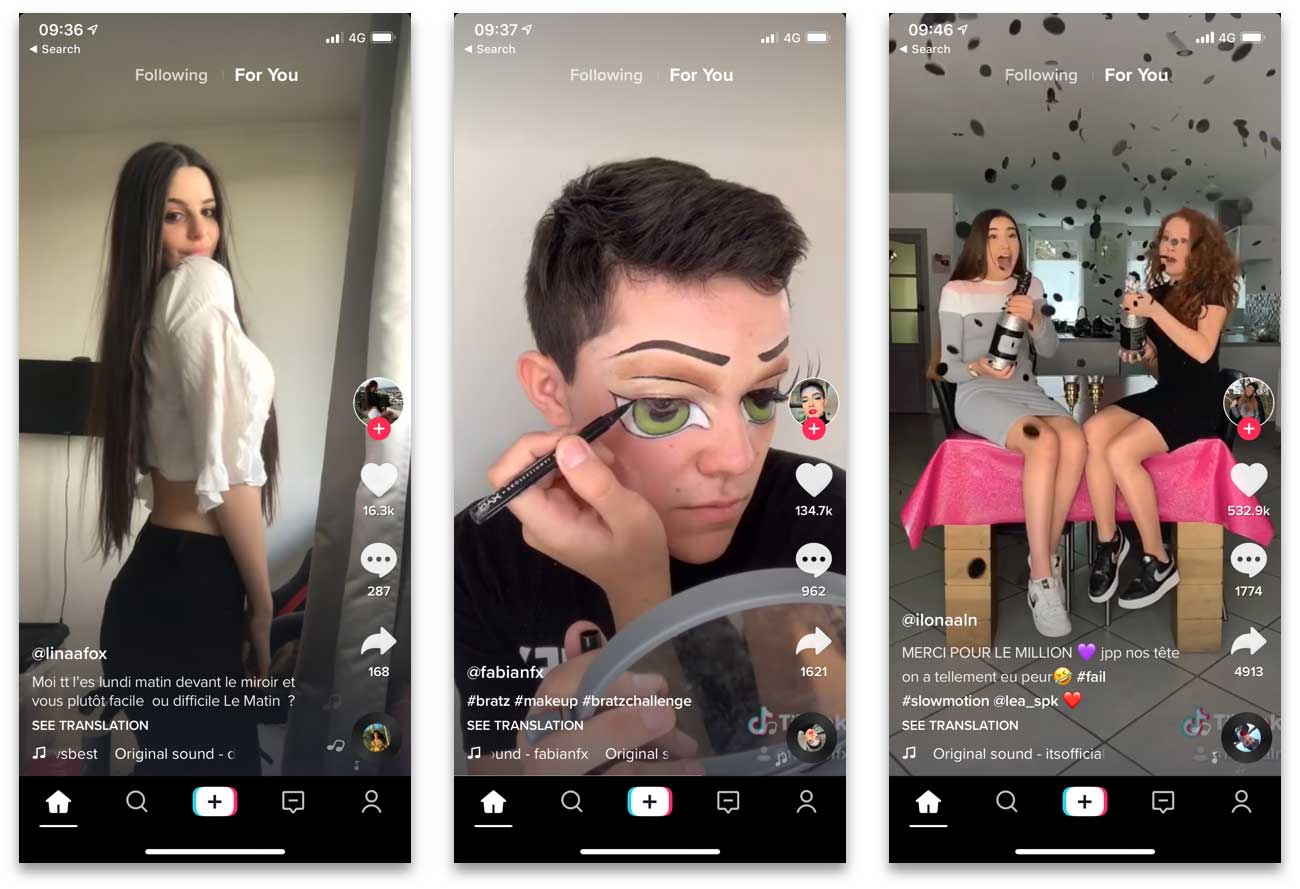
Just like Douyin, TikTok enables to share short videos and adding some playful effects, with a very addictive “vertical swipe” interface.
Here are some of the best Tiktok videos.
The growth of Tik Tok
Users growth
Another common point between Tik Tok and its Chinese version is its explosive growth. In just one year, the App almost quadrupled its number of monthly installs from 20 million to 75 million.
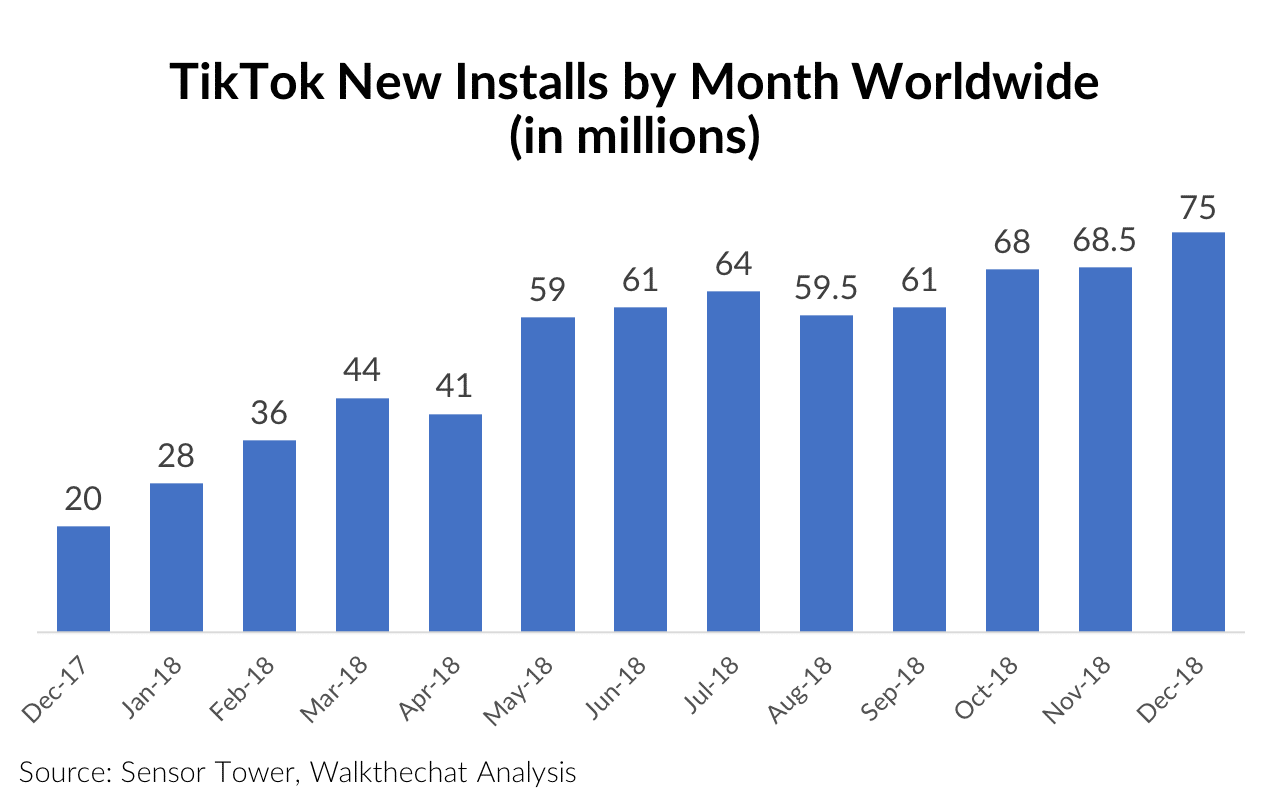
This enabled Tik Tok to propel itself to the top of the App stores, reaching #3 rank on the Google Play store in November 2018 worldwide and #1 in the U.S.
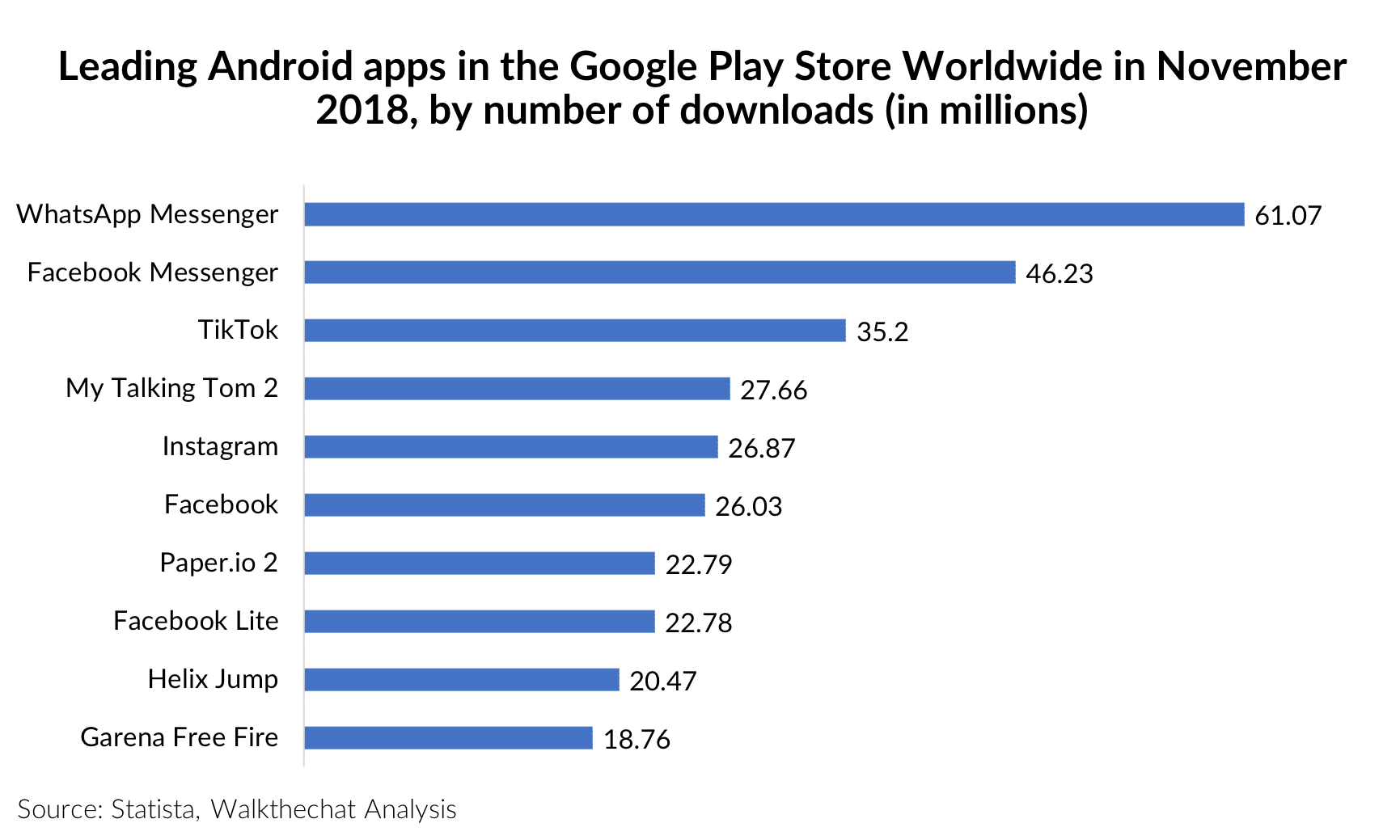
The US represents one of TikTok’s largest market outside of China accounting for 10% of TikTok’s total user base and 56% of TikTok’s revenue based on Sensor Tower’s estimation.
As of October 2018, TikTok was the most downloaded Android app in the US with 9.14 million downloads, ahead of traditional large social media downloads with nearly 20% more than Messenger downloads, 180% more than Snapchat and 270% more than Instagram downloads.
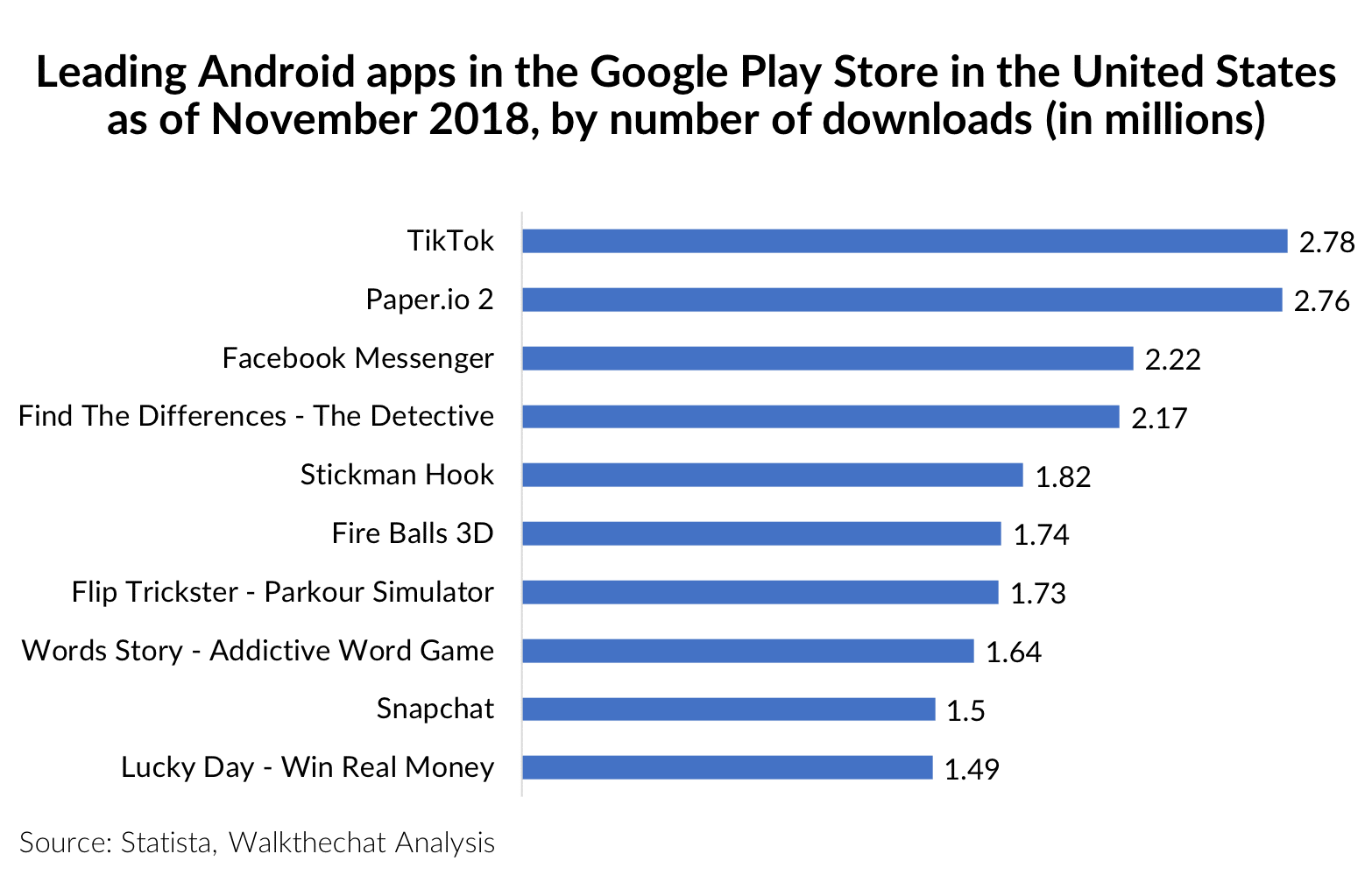
Revenue growth
Currently, TikTok makes money through brand collaborations, such as a Guess-sponsored “fashion takeover”, and virtual gift sales, used for tipping live streamers.
Such in-app purchase has grown considerably, reaching $6 million spent by users worldwide in December 2018, representing over 350% year-on-year growth from the previous December’s total of $1.7 million.
Although TikTok has not disclosed any financial information, Sensor Tower estimates that it took in roughly $3.5 million in October 2018.
How did Tik Tok succeed?
The success of Tik Tok isn’t just another Internet startup story. It is something much rarer: a successful example of a Chinese Internet company going abroad and dominating its category.
There are usually three strategies available to Chinese companies wishing to expand to international markets:
- Replication: replicating the company’s existing strategy and business model to similar markets. This approach has mostly been used by Chinese companies entering other emerging markets such as Huawei
- Adaption: localizing of the company’s products or services as well as adapting its operations to local market needs
- Acquisition: purchasing overseas companies which are already successful in the specific category
To achieve Tik Tok’s internationalization, Bytedance has used a combination of all the strategies above.
Replication
Tik Tok leveraged a few strategies which have proved extremely successful in China.
Hashtag #challenges
Douyin had successfully gained traction by leveraging challenges. For instance, asking users to create their own hot pot recipes in partnership with HaiDiLao.
A similar approach was leveraged by Tik Tok using hashtags such as:
- #karmaisabitch which invited users to display before/after makeover transformations
- #eatonthebeat: videos of themselves eating food on the beat of a song
- #chooseyourcharacter: mimic a video game’s character selection screen
Collaboration with brands
Douyin collaborated with high-end brands in order to set itself as a premium short-video platform and differentiate from competitors such as Kuaishou. In the same way, Tik Tok is leveraging brand partnerships in order to get quick access to a large audience.
TikTok has tried its first-ever ‘branded content piece’ in the US with involved a partnership with Guess to run a #InMyDenim challenge promoted to users of the app.
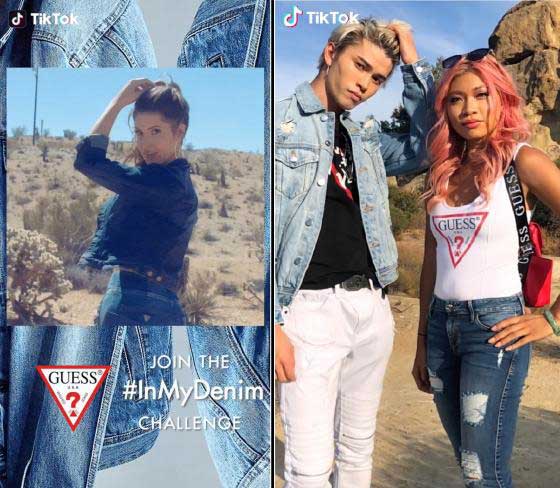
Guess also teamed up with a number of popular TikTok influencers. This partnership signals TikTok’s willingness to open its doors to in-app advertisements and ready to engage in revenue-generating activities beyond its in-app purchases.
Adaptation
TikTok also leveraged local trends and adapted its platform to perform best in each market.
Leverage celebrities and influencers fans to generate traffic
TikTok partners and collaborates with local artist agencies, ‘instafamous’ or influencers to promote the app. TikTok also collaborated with Japan’s second largest artist agency HORIPRO.
This strategy is used in almost all its international markets, as local celebrities and influencers represent the local culture and possess a large fan base and mature content channel. They are an efficient way of attracting users and driving traffic.
This strategy gained momentum, and TikTok now features accounts from Jimmy Fallon, Tony Hawk or Khloe Kardashian.
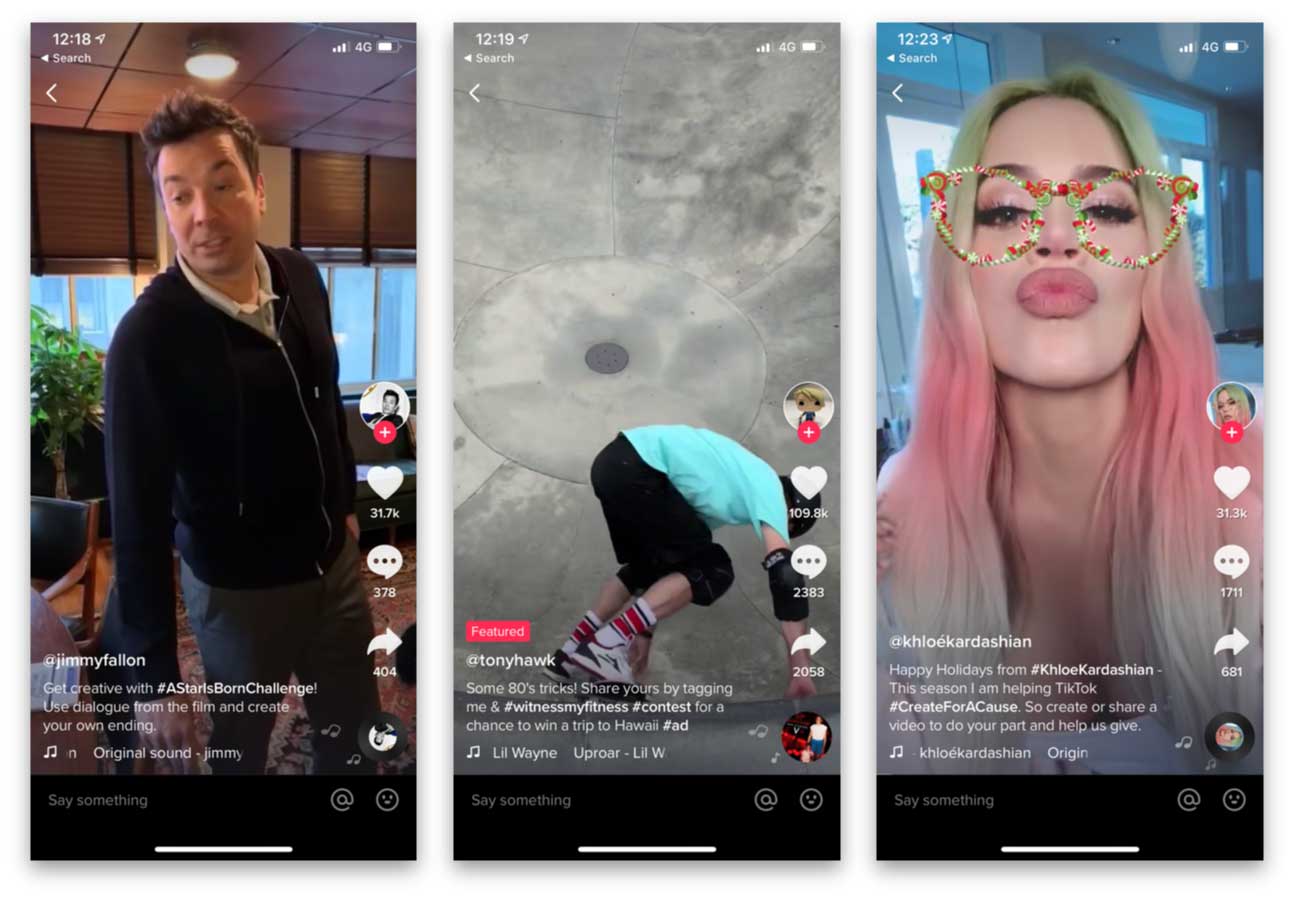
Generally, TikTok asks celebrities and influencers to publish videos made from the app to their Instagram, Twitter and other social media accounts in order to redirect users to TikTok, which increase TikTok’s user number and creates App stickiness.
Display ads in iconic locations
TikTok has made a point to be visible in the most iconic locations of its target countries. For instance, the app took over Piccadilly Street and Oxford Circus from December 17th, 2018 until New Year’s Eve.

TikTok also took over Time Square in NYC during last new year’s eve with its “New Year New Me” campaign.

Adapt local App experience
TikTok usually invites users to perform dance/acting routines on specific soundtracks. The soundtracks are therefore adapted for each market both in terms of taste and language.
The App has made a further effort in localizing their content to the Japanese market: apart from adapting the songs to Japanese users’ taste, TikTok has also simplified the movements to make imitation more accessible since Japanese users were identified as being shyer and less physically expressive.
TikTok also added more groups challenges which better matched Japanese users’ habits.
Acquisition
The last and maybe most powerful tool for Tik Tok’s expansion was the acquisition.
In November 2017, Bytedance fully acquired Muscial.ly for nearly $1bn.
Musical.ly was originally a video social network for creating, sharing and discovering short videos of maximum 15 seconds founded in 2014 by Alex Zhu and Luyu Yang. The App was developed in Shanghai, but had most of its users overseas.
Musical.ly was actually one of the first Chinese app that successfully internationalized overseas, the app had more than half of US teens using it and hit free apps’ No. 1 in the iOS App Store in 20 countries, including the United States.
The App has first gotten popular with its ‘don’t judge me’ challenge, the number of videos under this hashtag (#dontjudgeme) reached 200 thousand within a week. Muscial.ly’s understanding and respect for the US culture account for its popularity and success in the US. The app took advantage of US teens’ characteristics, including their independence, confidence and urge to make their own decisions, and targeted their desire to share and show their own style and uniqueness to the world.
In August 2018 merged Muscial.ly with TikTok, moving Musical.ly’s users on TikTok and making Alex Zhu, the co-founder of Musical.ly the vice president of TikTok. Musical.ly users just saw the App icon change on their phone, suddenly becoming TikTok.
Ongoing and future challenges
Low engagement rates
Despite TikTok’s exponential growth and rapid market penetration in numerous countries, it suffers from low engagement rate (the percentage of monthly users who open the app daily). In fact, its engagement rate is far behind some other apps: App researcher Apptopia found that TikTok’s had just a 29 percent engagement rate compared to 96 percent for Facebook and 95 percent for Instagram.
Online protection/bullying
TikTok has been facing bullying, inappropriate content/lyrics, and body shaming problems and was accused of pushing limits of Children’s Online Privacy Protection Act (a law that prohibits the collection of certain types of information from users younger than 13 years old). In fact, it was just recently that TikTok was temporarily banned in Indonesia for inappropriate content.
Furthermore, TikTok also needs to overcome challenges around content supervision and online privacy protection: though they are common to all online platforms, especially to the ones experiencing exponential growth, they are extremely harmful, even deadly to companies; just ask Didi.
Lessons learned from Vine
Generally speaking, TikTok’s future development seems promising; however, I’m sure many of you still remember the shut down of the once popular video app Vine, no one can guarantee how long TikTok is going to prosper.
Similar to TikTok, Vine was a popular app with content creators who used it to create 6-second video comedy and music shorts, launched in 2013 and acquired by Twitter in 2012 prior to its official launch.
Looking ahead into TikTok future strategy, it is important that TikTok takes Vine’s case under consideration and learn from their failure. Vine’s shut down is mainly caused by the growing competition and its business model failure:
- Vine struggled to compete with Instagram: In 2013, as Instagram launched video features allowing users to create 15-second videos, users shifted from Vine to Instagram as they wanted more time for their videos (since Vine offered only 6 seconds videos).
- Vine stars left Vine: Vine failed to retain Vine stars as the platform was limited in size and poor in profitability; thus, as Vine stars’ grew in followers they had shifted their focus to larger and more reliable and profitable platforms such as Instagram and Snapchat to become a true internet influencer/celebrity. This caused Vine major issues as no traffic could be generated without Vine stars.
- Not attractive to advertisers: Advertisers would prefer investing in Instagram, Snapchat and Facebook rather than Vine due to its short and snappy video format that had little potential for in-app advertisement and represented an unsustainable advertising model.
Given Vine’s failed experience, competing against growing competition and retaliation from big social media giants such as Facebook as well as ensuring user retention will be the core challenges faced by TikTok in the future.
Nonetheless, despite the parallels that can be drawn between Vine and TikTok, TikTok’s business model is different from Vine’s; for example, though TikTok has not yet introduced in-app advertisement outside mainland China, but it still has the flexibility to do so and has already started working with brands such as Gucci in the US.
Conclusion
TikTok benefits from a solid foundation thanks to its popularity in China and the strong capital backing it (ByteDance is valued at $75 billion USD).
The key of TikTok’s successful international expansion lies in its generous and rightful investments, especially the full acquisition of Musical.ly which has been proven to be a major contributor of TikTok’s rapid expansion, and great sensitivity to national culture and local consumers tastes.
However, TikTok needs to improve its privacy protection and ensure long-term engagement/stickiness in order to pursue its global expansion.

